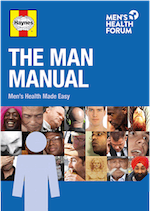Ask Scott: A beginner's guide to gym equipment
What do you need to do before starting to use gym equipment?
Before undertaking any new physical activity it is important that you get a full health check. Most gyms provide this free of charge to members, but if you are exercising elsewhere you may want to consult your doctor.
Good health checks consist of a PAR-Q (Physical Activity Readiness Questionnaire), where you will be asked questions about your and your family's medical history. You will also be asked to have your blood pressure checked. This is just to make sure you can exercise safely and at what level.
If you are going to use any gym equipment make sure you know how to use it. Most pieces of cardiovascular equipment are self explanatory, however if you are going to use a treadmill make sure you know how to stop it before you get on.
Although I much prefer free weights, resistance machines are often a very useful tool for some people; again make sure you know how to use each machine before you start. Every make and model are different; if in doubt ask a qualified trainer or instructor.
I recommend consulting an experienced trainer before you start using any free weights. This may cost you some money and take a little time, but the results will be worth it.
Talk us through the main machines.
EXERCISE BIKE
- Exercise bikes come in all sorts of shapes and sizes and are very easy to use (just get on and pedal).
- As well as training the heart and lungs you will also use your legs.
- Because there is no weight-bearing they are safe to use by almost anyone, even people recovering from injury or starting a training programme for the first time.
- Make sure the saddle is at the right height for you to get the most out of this machine (consult your trainer).
TREADMILL
- If it's cold and wet outside you can use a treadmill, otherwise try sampling the great outdoors by going for a run in fresh air, Just like the exercise bike they also train your legs as well as your heart and lungs.
- Learn how to walk properly on a treadmill; look forward and don't hold on! I've lost count of the times I've seen people trotting along (usually at full incline) holding on and I ask myself the question: what exactly do you think their doing?
- As I mentioned before make sure you know how to stop the treadmill before you get on it, there's nothing worse than needing to stop and you don't know how.
ROWER
- Indoor rowers are my favourite machines, basically because they are the most functional. As well as your cardiovascular system they train pretty much every muscle in your body; arms, trunk and legs.
- However most people row with poor technique, which puts too much strain through the lower back.
- It is well worth consulting a good trainer to get some instruction on how to use rowing machines (ask if they have the Concept 2 Rowing Instructor's Qualification), or consult the Concept 2 website for tips on technique and training.
ELLIPTICAL TRAINER (or Cross Trainer)
- These are a cross between exercise bikes and treadmills, basically you cycle standing up (mimicking the action of a cross-county skier).
- They place more of an emphasis on the arms as well as the legs and cardiovascular system.
- Elliptical trainers are good for almost anyone and are relatively versatile, you just need an imagination to think up some exciting routines.
- When using a cross trainer try to stand straight up; don't lean too far forward or too far back, other than that they are simple to use.
Are machines better than free weights?
I recommend using free weights rather than resistance machines as they are much more functional and versatile.
The down side with free weights is it is a lot easier to injure yourself (or even worse - someone else) if you don't know what you are doing. The first rule of any training programme is start light and build up; don't be pressured by anyone else into lifting a weight that is heavier than you think you can manage.
It's funny but around 80% of injuries using free weights do not occur when the exerciser is in the middle of a set, rather when they are picking the weight up or putting it back down when they have finished. Always make sure you lift weights up and place them down with good technique, that is; keep a tight back and bend at the knees.
What about warming up?
When starting any session it is vital that you warm up thoroughly before you start. Begin by doing some light cardio work to increase the heart rate and body temperature. After about 5 minutes of that begin some mobility movements (such as arm circles or trunk twists) and then progress into a stretching routine.
Modern research suggests that it is wise to do a dynamic stretching routine prior to exercising rather than traditional static stretching (which should be done after exercise) as this leads into improved performance.
If you are lifting weights then do some light reps before doing anything full on.
Do you need to warm down?
After training it is wise to cool down to minimise DOMS (Delayed Onset Muscle Soreness), which is the stiffness and soreness you feel for a couple of days after your session. When you exercise chemical reactions occur in your muscle cells (this is how we move) and the more intense the exercise the more intense the chemical reactions. These reactions produce waste products and it is thought these account for much of the DOMS effect.
In order to minimise this do about 5 more minutes of light cardiovascular work followed by a good stretching routine. If you have time go for a sauna or Jacuzzi and contract this with a cold bath or shower. This contrast (hot and cold) makes your blood vessels relax and then contract causing a flushing effect to get rid of the waste products. If you do feel stiff the next day, try to move as much as possible, you probably won't feel like it but it will help.
How long should I work-out for?
There is no set time that you should work for; it completely depends on your lifestyle and training goals, but the American College of Sports Medicine (ACSM) recommend exercising for 20 minutes three times a week for general health. My sessions normally last between 45 minutes to an hour depending on what I am doing.
Is it worth buying home gym equipment?
With the large amount of gyms nowadays and with membership prices falling all the time there is no real need to buy your own equipment; however if you don't want to go to a commercial gym then I would recommend buying (or even cheaper... making) equipment that is as versatile as possible.
What is the point of buying a chest press machine, when all you can do with it is chest press? You could fill a bag with sand (for about £5999 less) and do sandbag bench press and about a thousand other exercises!
There are also many, many exercises you can do with little more than your own bodyweight. All you need is some imagination. Here are some great websites for ideas on training sessions and how to make your own equipment: Ross Training and Cross Fit.
Do you have a question for Scott?
| This article reflects the experience of the individual. It is not health information from the MHF under the terms of the NHS England Information Standard. It was last updated in 2007. |
Page created on December 11th, 2007
|
The Men’s Health Forum need your support It’s tough for men to ask for help but if you don’t ask when you need it, things generally only get worse. So we’re asking. In the UK, one man in five dies before the age of 65. If we had health policies and services that better reflected the needs of the whole population, it might not be like that. But it is. Policies and services and indeed men have been like this for a long time and they don’t change overnight just because we want them to. It’s true that the UK’s men don’t have it bad compared to some other groups. We’re not asking you to ‘feel sorry’ for men or put them first. We’re talking here about something more complicated, something that falls outside the traditional charity fund-raising model of ‘doing something for those less fortunate than ourselves’. That model raises money but it seldom changes much. We’re talking about changing the way we look at the world. There is nothing inevitable about premature male death. Services accessible to all, a population better informed. These would benefit everyone - rich and poor, young and old, male and female - and that’s what we’re campaigning for. We’re not asking you to look at images of pity, we’re just asking you to look around at the society you live in, at the men you know and at the families with sons, fathers and grandads missing. Here’s our fund-raising page - please chip in if you can. |


